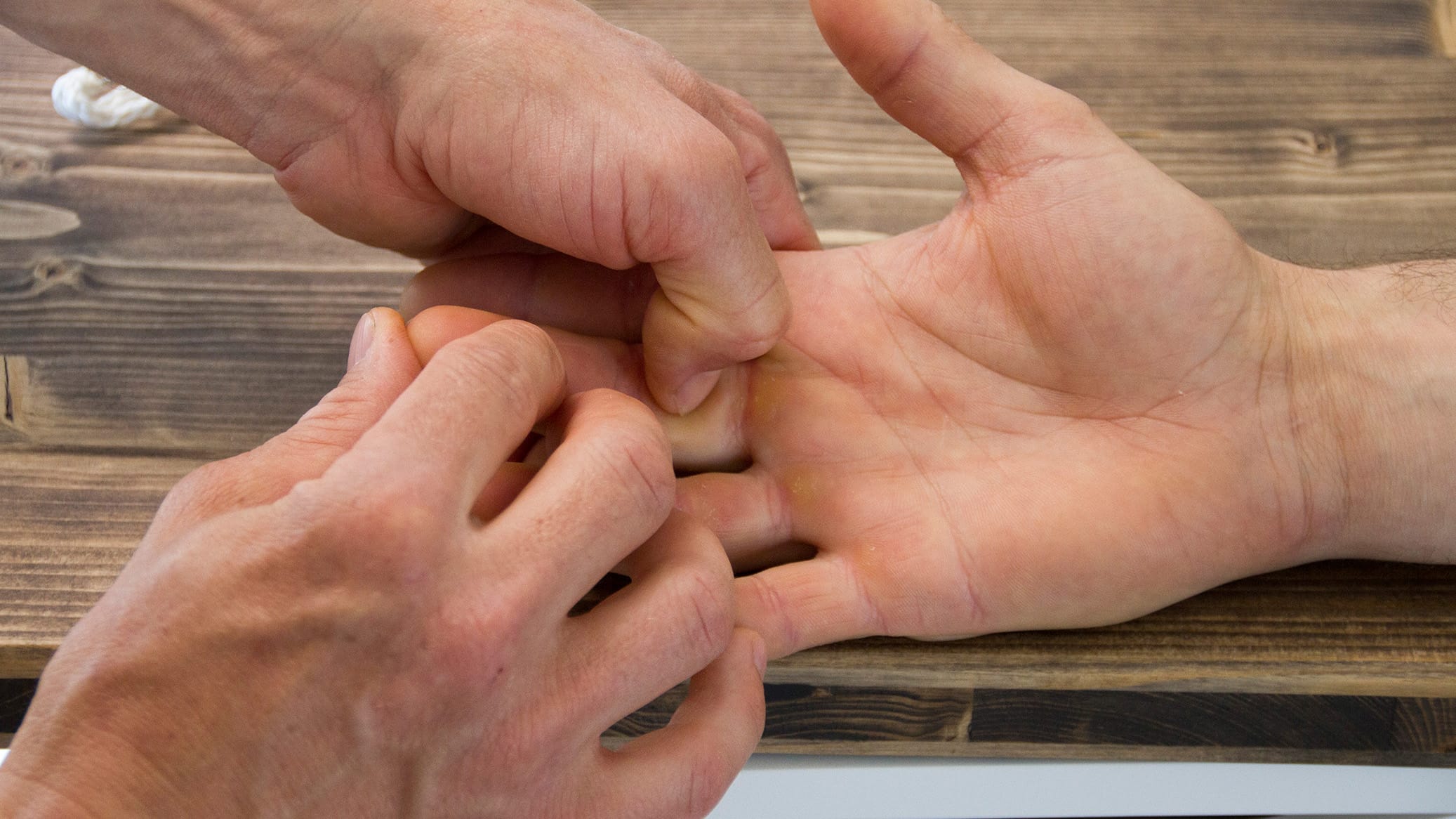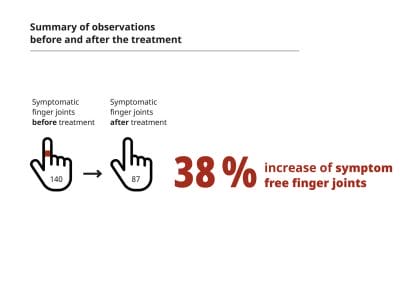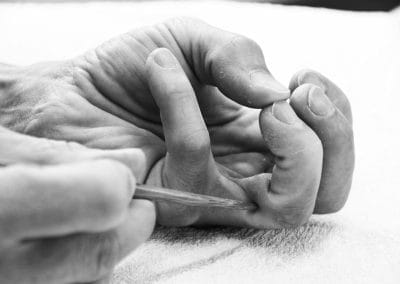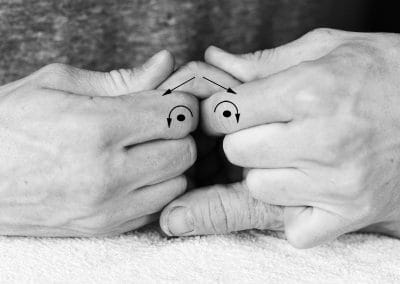
Isele-method
The Isele-method is a conservative, local-osteopathic method to treat finger complaints, especially climber’s fingers.

My Approach
Through my constant work with climbers over the last 10 years, it has become more and more natural to treat fingers and to develop my own method for doing so. In order to provide a scientific basis for the constantly evolving treatment method, I started a pilot study in 2016 and wrote my master thesis about the results on the following topic: “Treatment of finger problems in climbers with the local-osteopathic Isele-method: a Pilot study.”
At this point there is no similar method of conservative treatment of climbing indicated finger complaints.
The Study
The high number of subjects and a throughout positive development of treatment shows the high relevance of conservative finger therapy for climbers. The Isele-method is time effective, requires only minimal equipment and showed clear improvement of all characteristics, such as the notable decline in ‘restriction of training intensity’ from NRS 7 to NRS 2 (ten is the maximum training restriction). After one treatment with my method the indicated number dropped down to two. All these characteristics are strongly connected to a climber’s quality of life, so treatment can be seen as holistic.
The results of my study are very promising. You have to keep in mind that it is a Pilot study. And I have to admit that I am not always impressed by study results but impressed by patient success. On the one hand we really need „evidence based medicine“ but on the other hand medicine would just not be possible if we would only work based on evidence. Experienced medicine is something very valuable. And this is something I always keep in mind and influences the way I work. Let’s say: Anatomy and physiology are the fundaments I stand on, but one half of the building is made of evidence based medicine and the other half of experience based medicine. The rooftop completes the structure with the fine art and philosophy of an osteopath. By means of the Isele-method I try to give back life quality. That is initially not to interfere much with the lifestyle of the patient.
The method is still new and stands at the beginning of its development. But within my studies I could show that it is an unproblematic intervention (there are no noteworthy side effects).
No matter if chronic or acute pain, the treatment was likewise successful. That gives hope to those people who are looking for help for a long time already.
For the study I only treated once, in my clinic I’d treat a few times (about 2 – 6 times, depending on the case). I always combine the Isele-method with my global osteopathic approach which ensures a full treatment and the best outcome.
Abstract
MASTER THESIS: Treatment of finger problems in climbers with the local-osteopathic Isele-method: a Pilot study
Climbing and Bouldering is a trend sport and it’s fashionable. The growing number of athletes is connected with an increase of complaints in connection with/of the fingers. However, the scientific literature is mainly focused on injuries of the annular pulley-system of the flexor tendons with an emphasis on major injuries, e.g. rupture of the ring ligaments and their surgical management. Although only a minority of these cases require surgical intervention, and not all symptoms come from a rupture it seems that the field of climbing-related injuries is only insufficiently covered.
To date, none of the conservative therapeutic approaches can be considered gold standard. Conservative finger therapy is mainly focused on the rehabilitation process following the ruptures described above.
In the context of the present pilot- and feasibility-study 61 patients with climbing-related undefined finger symptoms underwent a new local osteopathic therapy, involving the Isele-method and Isele–techniques.
In contrast to established conservative therapeutic concepts, all patients were only treated once and received neither advice concerning therapy or behaviour nor a specific training program. The only requirement: climbing was prohibited for a minimum of 48 hours after treatment. Any change regarding the finger injury or symptoms was assessed at three occasions via patient interview and questionnaire including a visual analogue scale. A clear benefit could be observed for all surveyed areas, specifically regarding possible intensity and extent of the training. Furthermore, a notable relief of pain and other symptoms during climbing and an increase in quality of life were reported by patients. Although the Isele-methods were reported to be painful to some extent they were consistently evaluated positively by the patients.
INDICATION
- All kind of finger pain from climbing
- Acute as well as chronic problems
I am looking forward to your inquiry.











